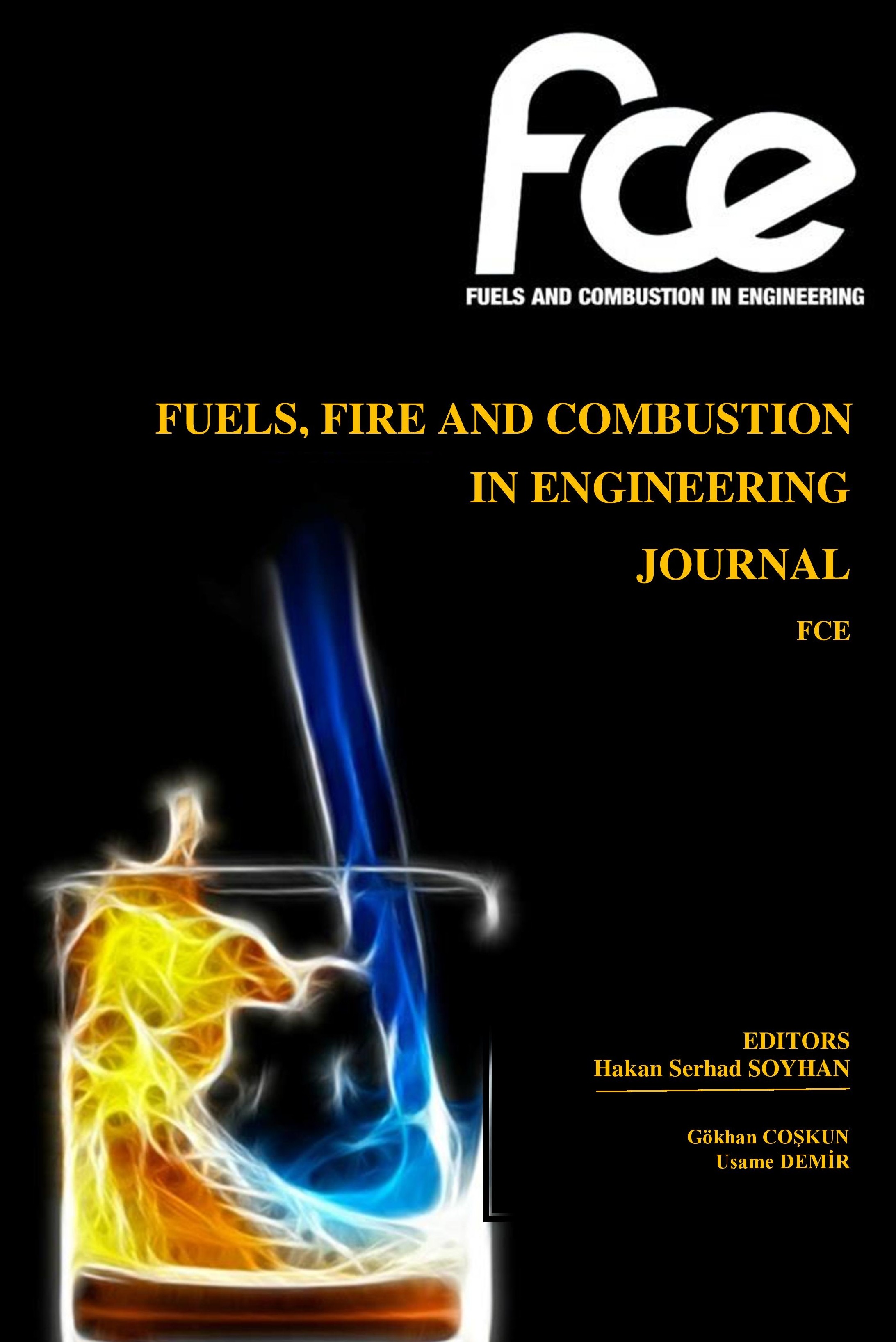Tahliye Sırasında Yangın Dumanından Etkilenme Oranlarının Simülasyon Destekli İncelenmesi: Bir Hastane Modeli
Bu çalışmada hastane binalarında yangın anında kullanıcıların tahliyesi ve dumandan etkilenme oranlarının simülasyon destekli olarak incelenmesi için HAD tabanlı yangın simülasyonu Fire Dynamic Simulator (FDS) ile birlikte tahliye simülasyonu kullanılarak, yatay tahliye, asistanlı tahliye gibi hastane binalarına özel tahliye olanaklarının irdelenmesi hedeflenmiştir. Yangın simülasyonunda ilgili yönetmelik ve standartlarda belirtilen yangın yükleri baz alınarak hesaplamalar yapılmıştır. Hastane binalarında bulunacak yaşam destek ünitesine bağlı, medikal gazlara muhtaç, hareket kabiliyetleri sınırlı vb. hastaların yangın anında tahliyesi ve dumandan etkilenme oranları incelenmiştir. Örnek bir hastane mimarisi üzerinden tahliye olanaklarının yeterliliği araştırılmıştır. Yapılacak tahliye simülasyonunda hastane ortamında bulunabilecek çeşitli hareket kabiliyetlerine sahip bina kullanıcılarının durumları göz önünde bulundurulmuştur. Bu bağlamda tahliye simülasyonu programında kullanıcı grupları oluşturularak gerçek duruma en yakın veriler elde edilmesi hedeflenmiştir. Yangın simülasyonu yazılımında hazırlanacak örnek yangın durumu tahliye simülasyonu yazılımına aktarılacak ve bu programda mimari üzerinde yerleştirilmiş olan bina kullanıcılarının tahliye süreleri, dumana maruz kalma düzeyleri, maruz kalınan sıcaklık değerleri ve yangın emisyonu olan toksik gazlara maruziyet dereceleri irdelenmiştir.
Anahtar Kelimeler:
Tahliye, yangın, hastane, sağlık, simülasyon, duman, can güvenliği
Simulation-Assisted Investigation of Fire Smoke Exposure Rates During Evacuation: A Hospital Model
In this study, it will be aimed to examine evacuation options specific to hospital buildings such as horizontal evacuation and assisted evacuation by using CFD (Computational Fluid Dynamics) based fire simulation Fire Dynamic Simulator (FDS) and evacuation simulation in order to evacuate users in hospital buildings in case of fire and to examine the smoke exposure rates with simulation. In fire simulation, calculations made based on the fire loads specified in the relevant regulations and standards. The fire evacuation rates of patients such as those who are connected to life-support units, in need of medical gases, have limited mobility, and etc. in case of fire and their exposure to smoke were examined, and the adequacy of evacuation options will be examined through an exemplary hospital architecture. If it is concluded that the evacuation options are insufficient, solutions will be offered and how the improvement can be done will be described. In the evacuation simulation, the conditions of the occupants with various mobility that may be found in a hospital environment was taken into consideration. In this context, it will be aimed to obtain data closest to the real situation by creating occupant groups in the evacuation simulation software. The sample fire situation to be prepared in the fire simulation was transferred to the evacuation simulation, and this examined the evacuation times, smoke exposure levels, exposed temperature values and the level of exposure to toxic gases, which are fire emissions.
Keywords:
Evacuation fire, hospital, health, smoke, simulation, smoke, life safety,
___
- [1] Binaların Yangından Korunması Hakkında Yönetmelik -(09/07/2015)-29411, 2015.
- [2] NFPA 101: Life Safety Code, 2018 Edition
- [3] NFPA 5000: Building and Construction Safety Code, 2018 Edition
- [4] NFPA 99: Health Care Facilities Code, 2018 Edition
- [5] SFPE Handbook of Fire Protection Engineering-5th Edition-Morgan J_2015-2016
- [6] J.R. Hall, Jr. Directions and Strategies for Research on Human Behavior and Fire, Are We Prepared to Support Decision-Making on the Major Themes?, (2004), The Third International Symposium on Human Behavior in fire, London
- [7] SFPE Guide to Human Behavior in Fire 2nd Edition
- [8] ISO/TS 29761:2015 Fire safety engineering — Selection of design occupant behavioural scenarios
- [9] ISO 19706:2011 Guidelines for assessing the fire threat to people
- [10] ISO 13571:2012 Life-threatening components of fire — Guidelines for the estimation of time to compromised tenability in fires
- [11] BS 7899-2:1999 Assessment of hazard to life and health from fire - Part 2: Guidance on methods for the quantification of hazards to life and health and estimation of time to incapacitation and death in fires
- [12] BS PD 7974-6:2019 Application of fire safety engineering principles to the design of buildings – Part 6: Human factors. Life safety strategies. Occupant evacuation, behaviour and condition (Sub-system 6)
- [13] BS EN 1991-1-2:2002 Eurocode 1: Actions on structures Part 1-2: General actions – Actions on structures exposed to fire
- [14] TS EN 12845:2015+A1:2019 Sabit yangın söndürme sistemleri - Otomatik sprinkler sistemleri – Tasarım, kurulum ve bakım
- [15] Fridolf, Karl, Walking Speed in Smoke: Representation in Life Safety Verificaitons, Elsevier Journal, 2018
- [16] BS PD 7974-1:2019 Part 1: Initiation and development of fire within the enclosure of origin (Sub-system 1)
- ISSN: 2564-6435
- Başlangıç: 2016
- Yayıncı: Hakan Serhad SOYHAN
Sayıdaki Diğer Makaleler
TERMİK SANTRALLERDE YANGIN GÜVENLİK ÖNLEMLERİNİN ANALİZİ; ZONGULDAK EREN ENERJİ ÖRNEĞİ
Kerem İLBAY, Gökhan COŞKUN, Ekrem BÜYÜKKAYA
BOR MİNERALİNİN YANGIN GECİKTİRİCİ ETKİLERİ
Ulvi TOPÇU, Hakan Serhad SOYHAN
YANICI KİMYASALLARIN LEL HACİMLERİNDE PATLAYICI ATMOSFERİNİN BELİRLENMESİ
Elektrikli Araçlarda Batarya Kaynaklı Yangınlar
Ümit ŞENYÜREK, Hakan Serhad SOYHAN, Doç. Dr. Cenk ÇELİK
Bir Saha Çalışması: Süt Ürünleri Üretim Tesislerinde Termal Konfor
Anil Can TÜRKMEN, Fatih DENİZ, Kursat Can ATA, Doç. Dr. Cenk ÇELİK
